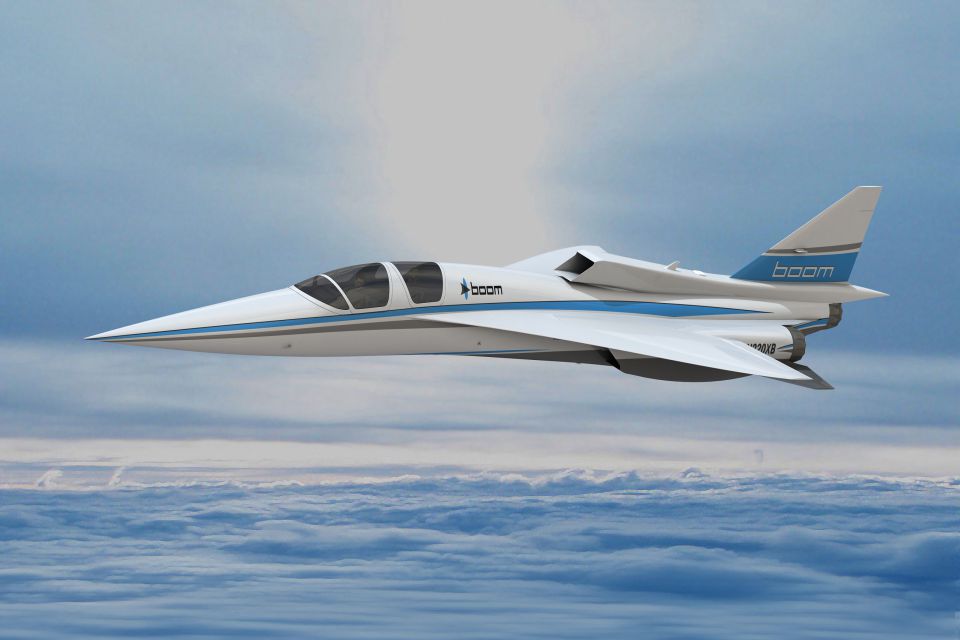Aerospace
Boom Supersonic to Showcase Vision of Supersonic Flight at Dubai Airshow 2017

As part of ‘The Future of Travel,’ the world’s fastest passenger aircraft will transform travel to, from, and through the Middle East
Dubai, UAE – 30 October 2017 – Boom Supersonic (Boom) today confirmed its inaugural appearance at the Dubai Airshow. Boom was founded with the purpose of removing barriers to experiencing the planet. To realize this vision, Boom is building a Mach-2.2 airliner—the fastest civil aircraft ever made—capable of operating economically at current subsonic business-class fares. Boom’s airliner will fly 2.6 times faster than today’s commercial aircraft.
Earlier this year, Boom debuted its supersonic passenger airliner, slated to enter service in 2023, to audiences in the Middle East. Boom’s mission complements the United Arab Emirates’ strategy of embracing new and innovative transportation solutions—and the UAE is ideally positioned to become a supersonic hub connecting Europe, Asia, and Oceania.
In June, Boom participated in the Paris Air Show, announcing 76 orders for its airliner. At the same time, the manufacturer unveiled the newest design of its XB-1 supersonic demonstrator aircraft, which is slated to fly in late 2018.
“The Gulf is home to the world’s most elevated airline experiences,” said Blake Scholl, Boom’s founder and chief executive officer. “This year’s theme in Dubai is ‘The Future of Travel;’ supersonic flight is the biggest leap forward since the jet, removing time barriers and allowing passengers to make business and leisure trips to destinations that otherwise would have been too far. We’re excited to be here sharing our progress toward a faster future.”
On Boom’s supersonic airliner, a trip from Dubai to Sydney shrinks from 15 hours to just over 8, enabling a weekend holiday in Australia. Passengers traveling to London save 5 hours round-trip, enabling a day trip from Dubai to London.
Meet the Boom Supersonic team at the Dubai Airshow 2017, booth #1676 in the Dubai Exhibition Hall.

Aerospace
Boeing Transfers Rocket Stage to NASA, Paving Way for Human Moon Mission

Boeing has achieved a significant milestone by providing NASA with the second core stage of the Space Launch System (SLS) rocket.
This crucial component, crafted at NASA’s Michoud Assembly Facility (MAF), is set to propel the Artemis II crew into lunar orbit, marking humanity’s return to deep space after a 50-year hiatus.
The monumental Boeing-built rocket stage, the largest element of the Artemis II mission, will embark on a journey aboard the Pegasus barge, traveling 900 miles to NASA’s Kennedy Space Center.
Comparison of two legendary aircraft B777x vs B747 aircraft:Click here
Upon arrival, it will be meticulously integrated with other essential Artemis II components, including the upper stage, solid rocket boosters, and NASA’s Orion spacecraft within the iconic Vehicle Assembly Building. This intricate integration process is a vital step toward the eagerly anticipated Artemis II launch, slated for 2025.
“Boeing-built products helped land humankind on the moon in 1969, and we’re proud to continue that legacy through the Artemis generation,” remarked Dave Dutcher, vice president and program manager for Boeing’s SLS program. “Together, with NASA and our industry partners and suppliers, we are building the world’s most capable rocket and paving the way to deep space through America’s rocket factory in New Orleans.”
NASA, Lockheed Martin Reveal X-59 Quiet Supersonic Aircraft:Click here
The delivery of Core Stage 2 marks a significant achievement in the evolution of the SLS rocket. Towering over 200 feet and powered by four RS-25 engines, this core stage, coupled with two solid-fueled booster rockets, will generate a staggering 8.8 million pounds of thrust. This immense power is crucial to launching Artemis II and future missions into the vast expanse of space.
The SLS rocket stands unparalleled in its capability to transport both crew and substantial cargo to the moon and beyond in a single launch. Its extraordinary capacity will facilitate the delivery of human-rated spacecraft, habitats, and scientific missions to destinations including the moon and Mars, ushering in a new era of space exploration.
-

 Travel1 week ago
Travel1 week agoAir India to Expand US Operations with Three New Routes After a Decade
-

 Travel2 weeks ago
Travel2 weeks agoWhy We Should Avoid These Stamps in a Passport
-

 Airlines1 month ago
Airlines1 month agoInvestigations Reveal Fake Chinese Titanium in Boeing and Airbus Jets
-

 Tech4 weeks ago
Tech4 weeks agoChina’s CATL Plans 1,800-Mile Electric Plane Launch by 2027
-

 Airport3 days ago
Airport3 days agoTop 10 Largest Airports in the World by Size
-

 Aerospace4 weeks ago
Aerospace4 weeks agoChina’s Fighter Jets Turn Wings into Autonomous Drones
-

 Airlines4 days ago
Airlines4 days agoAir India Rolls Out A350s for Delhi-New York JFK and Newark Routes
-

 Defence3 weeks ago
Defence3 weeks agoBoeing Enhances Chinook with New Engines and Block II Upgrades at $96 Million







